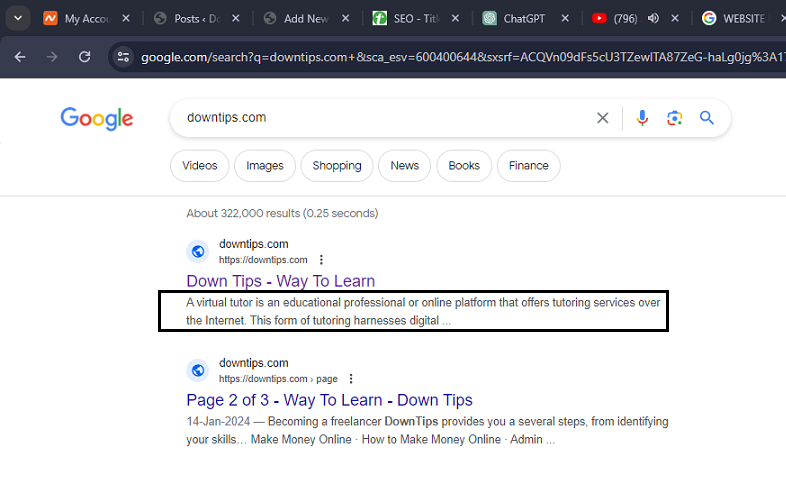For website optimization, HTML uses a Meta Description in the SEO element that provides a straightforward web page summary. The goal of a webpage’s meta description tag, which is included in the search result snippet on a search engine results page (SERP), aims to give the consumer a quick and rough overview of the information on the website and how it relates to the searched term. While meta descriptions do not directly impact search engine rankings, they play a crucial role in attracting users and influencing click-through rates.

An illustration of HTML code for Meta Description
<head> <meta name=”description” content=” Here is an example of a meta description. This is what will show up in search results.”> </head>
(What is Meta Description in SEO)
Here are key aspects of meta descriptions in SEO:
- Summary of Content:
- The meta description should succinctly summarize the content of the page. It provides users with a brief preview of what they can expect if they click on the link.
- Length:
- While there is no strict character limit for meta descriptions, it’s generally recommended to keep them between 150 and 160 characters. Google may truncate longer descriptions in search results.
- Relevance to Title Tag:
- Ensure that the meta description is closely related to the page’s title tag. Together, they should provide a cohesive and accurate representation of the content.
- Include Keywords Naturally:
- While meta descriptions don’t directly impact rankings, including relevant keywords can help highlight the page’s relevance to search queries. Use keywords naturally and in a way that makes sense to users.
- Encourage Click-Throughs:
- Craft compelling and engaging meta descriptions that encourage users to click on the link. Highlight unique selling points, special offers, or key information that sets your page apart from others.
- Avoid Duplicate Meta Descriptions:
- Similar to title tags, each page on your website should have a unique meta description. Avoid using identical or very similar meta descriptions across different pages.
- Call-to-Action (CTA):
- Consider adding a call-to-action (CTA) to your meta description to prompt users to take a specific action, such as “Learn more,” “Discover,” or “Get started today.”
- Accurate Representation:
- The meta description should accurately represent the content of the page. Misleading or inaccurate descriptions can lead to a poor user experience and may negatively impact your site’s reputation.
- Local SEO Considerations:
- If your business has a local focus, include location-specific information in your meta descriptions. This can be particularly important for attracting local users.
- Regular Review and Updates:
- Periodically review and update your meta descriptions, especially if there are changes to the content or focus of a page. Keeping them fresh and relevant is important for both users and search engines
Last word
On-page SEO includes meta descriptions as one of the crucial components. However, there continues to be a tonne of other factors to improve. To make potential consumers feel sure that their questions can be answered with just a single click, the best practice regarding meta descriptions is to effectively and concisely summarise the webpage’s content.
